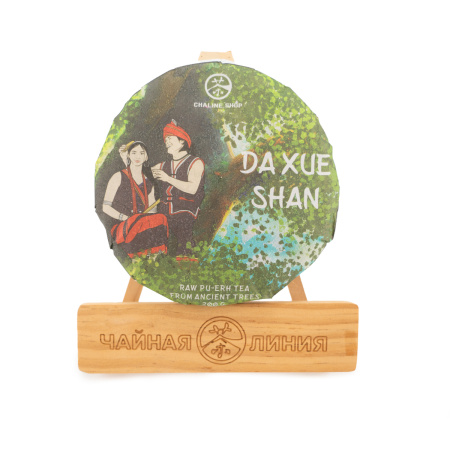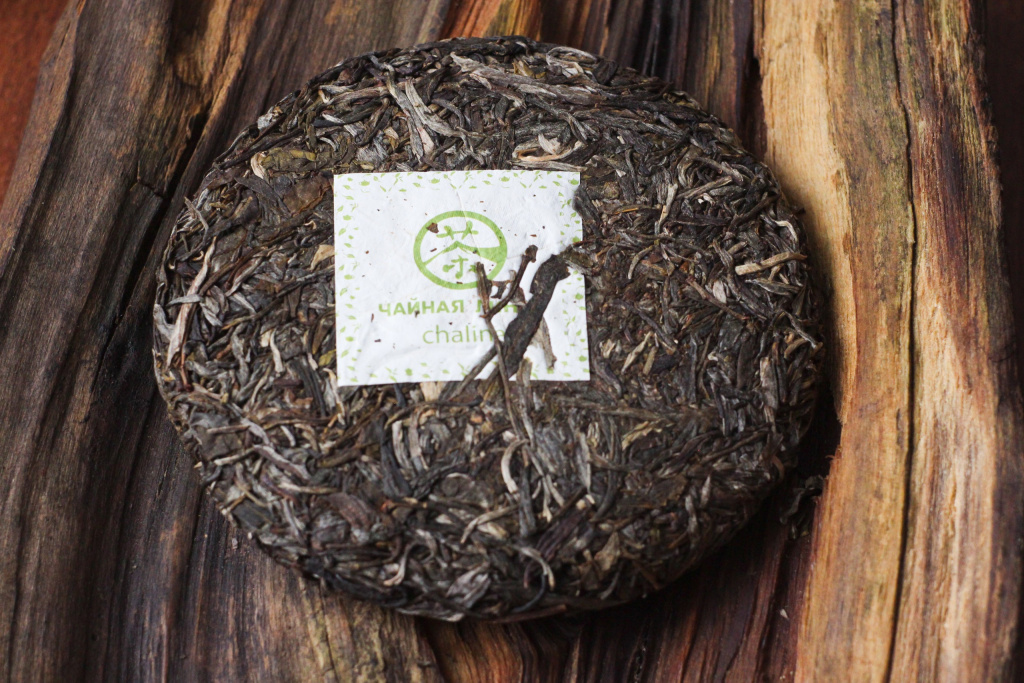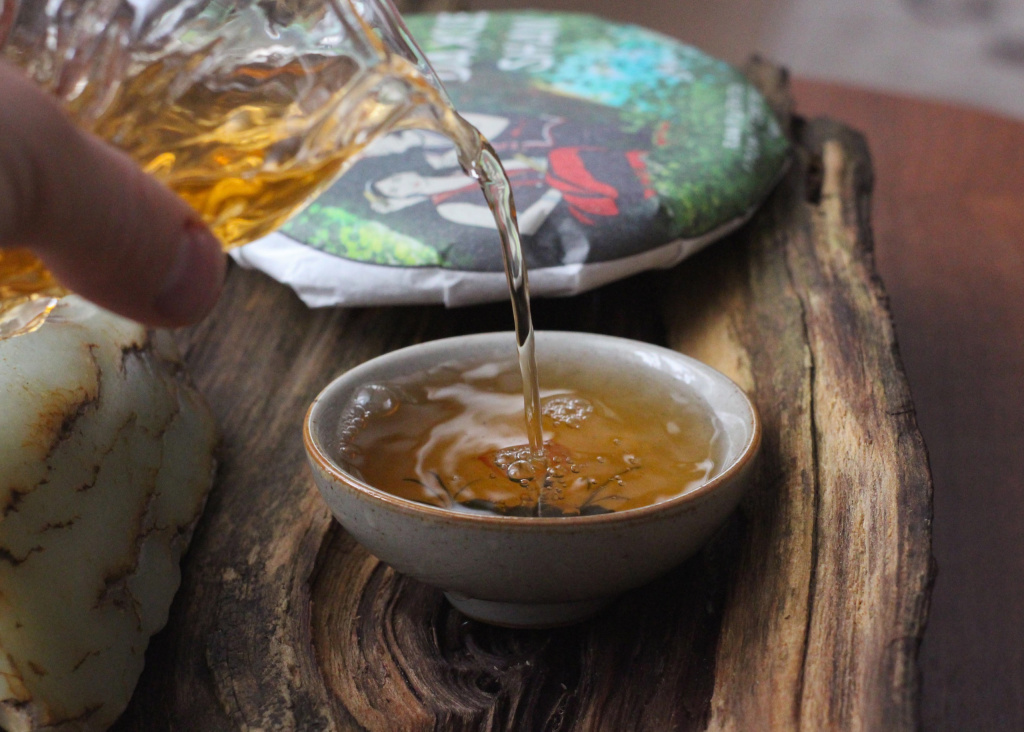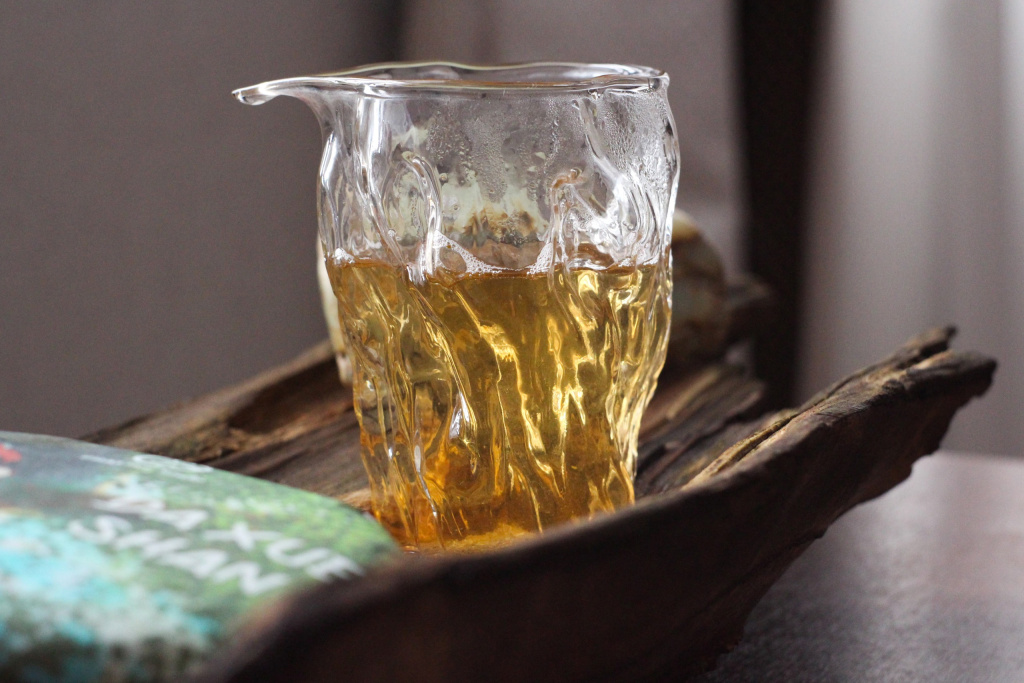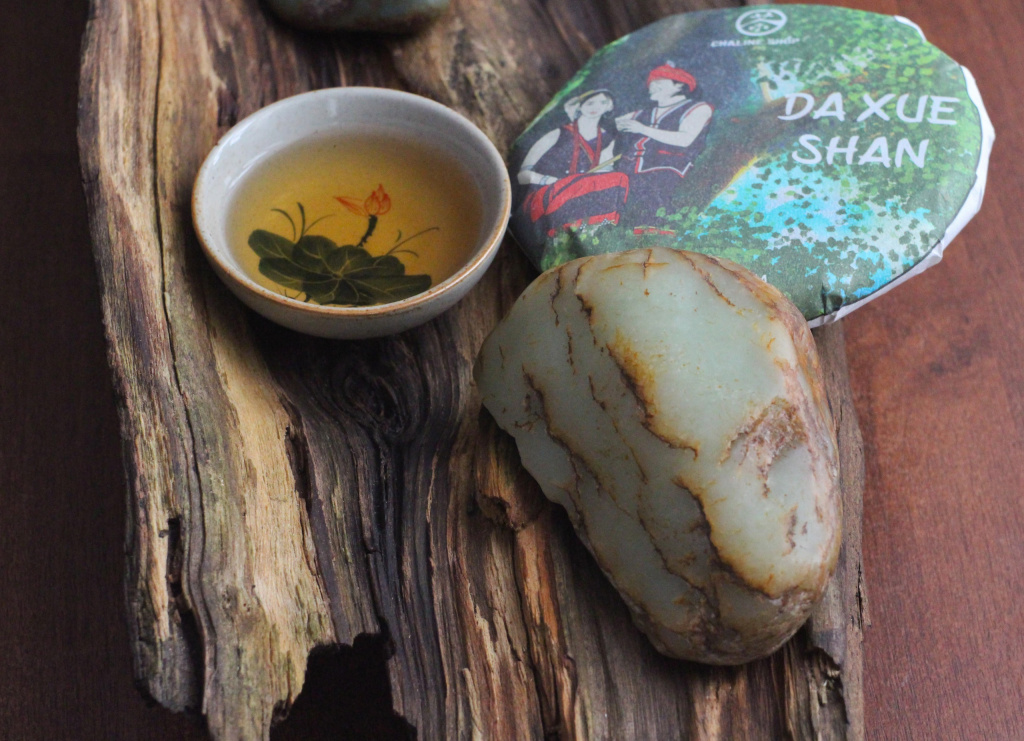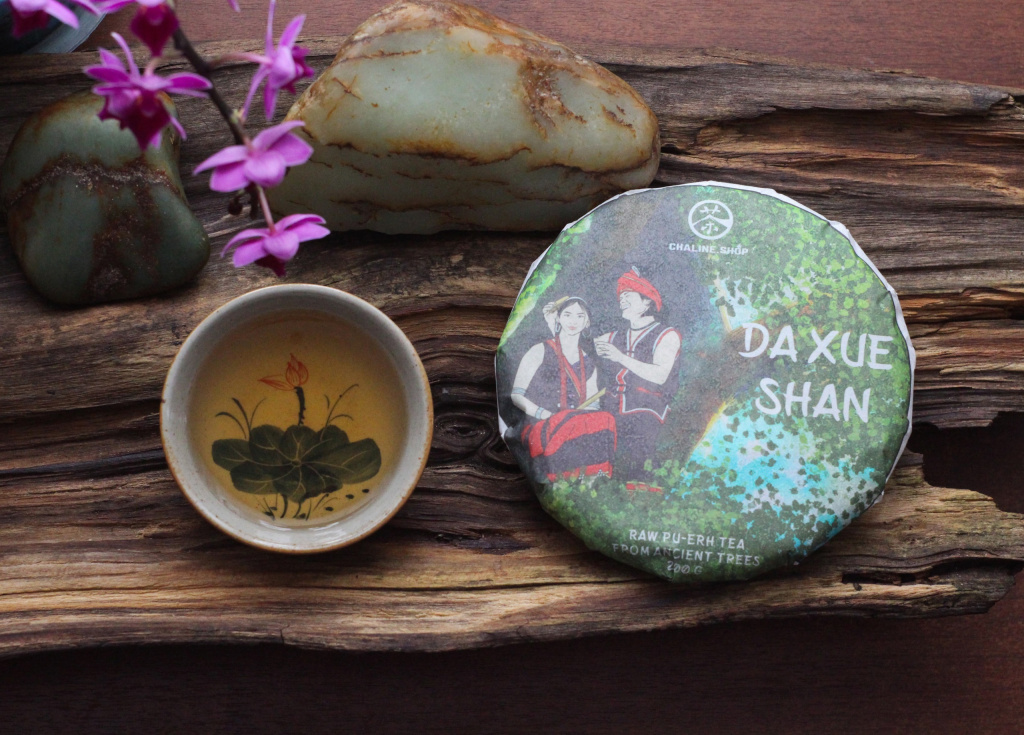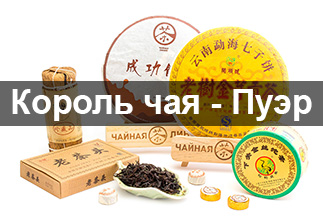To produce this puer, we used single-variety raw materials collected from old tea trees up to 200 years old in the Daxueshan Mountains (Chinese: 大雪山, pinyin: dàxuěshān), which rise majestically in Shuangjiang County, Mengku City. The trunks of the old trees are about 40 cm thick, the average height is 5 m, but there are specimens with a trunk thickness of 100 cm and a height of about 10 m.
Collectible exclusive sheng puer. Single-sort, unblended raw materials from tea trees.
Sheng from the Daxueshan Mountains turned out to be incredibly multifaceted, complex, rich and bright. The taste is woven from many fruity and floral motifs, intertwined with notes of wild honey and wood resins.
This sheng has a noticeable tea effect. It activates Qi energy, gently tones and encourages action, reboots and balances.
This pancake is a collectible, with a huge potential for storage from the start.
The cover features a Wa (Chinese: 佤族, pinyin: wǎzú) boy and girl sitting on an old tea tree on Mount Daxueshan.
|
Name in Chinese
|
Raw puerh tea 2020 from ancient trees Da Xue Shan, 200 g |
|
Country
|
China |
|
Habitat
|
Дасюэшань (大雪山) |
|
Manufacturer
|
Чайная Линия |
|
Year of pressing
|
2024 |
|
Pressing form
|
Bing Cha (Cake Tea) |
|
Declared weight, g
|
200 |
|
Type of tea raw material
|
Large trees (100-300 years) |
- Комментарии
- Вконтакте
Pu-erh is one of the most unique types of tea, which only gets better with age. Many people, when they first encounter this tea, wondered: why is pu-erh more often found in pressed form (cakes, bricks, tochas), and not in loose form? The reasons for this are related to both history and the practical aspects of storing and fermenting tea. Despite modern technologies that allow the production of loose pu-erh, the shape of pressed cakes remains unchanged. And pu-erh is more often found on sale in pressed form, for example, in the form of cakes or bricks, and loose pu-erh is less common. We will talk about the reasons for pressing pu-erh into cakes in this article.
Puer is a unique Chinese tea that is distinguished by its depth of taste, complexity of aromas and versatility of aftertaste. Its taste characteristics are formed under the influence of many factors, from growing conditions to the brewing method. Let's look at the main ones.
Over time, some consumers who are part of the country's "tea elite" discover mainland Chinese tea. And only a few get acquainted with Taiwanese varieties. The path of a tea person is usually long and thorny, but ultimately it leads to the King of Teas - puer. But not everyone is able to go all the way from ordinary teas to puer and appreciate its qualities.
The tea ceremony occupies a special place in the centuries-old Eastern tradition. And although the essence of this phenomenon remains constant, the nature and external manifestations of the tea ceremony in different nations have their own national characteristics. In each Chinese province, the tea ceremony and the tea used in it are varied: for example, residents of the southern provinces prefer green tea, and residents of the northern provinces - red tea, in Fujian province they more often use Oolong tea, and in Yunnan province Puer tea is widely known.





